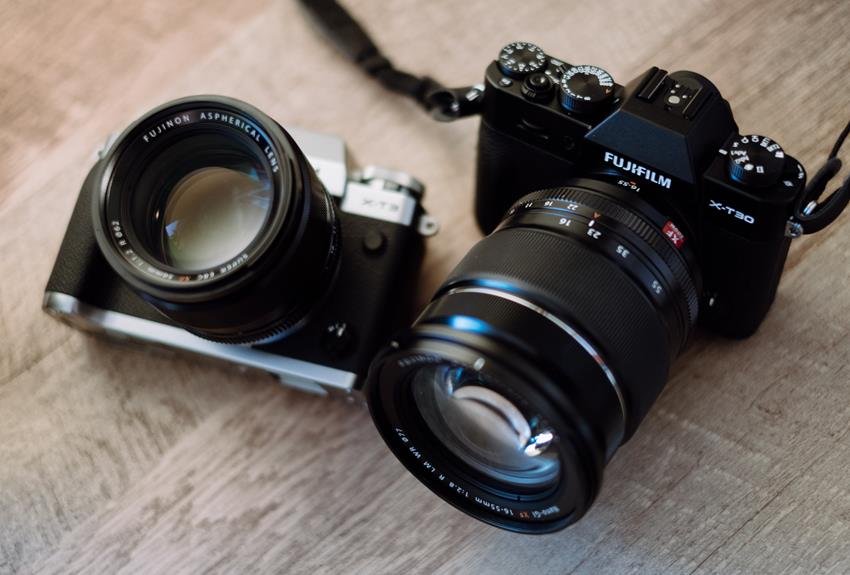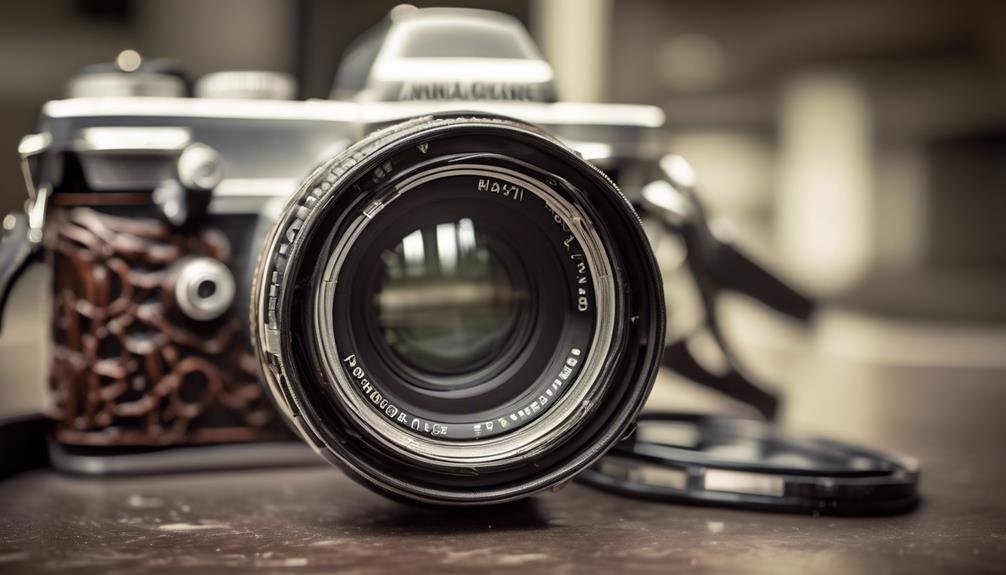
As mirrorless cameras continue to evolve, unlocking the telephoto potential feels like finding a hidden gem in a crowded marketplace. With the demand for compact and lightweight gear increasing, the challenge of achieving long-range shots without compromising image quality has become a priority for many photographers. But how do we maximize the telephoto capabilities of these smaller, more agile cameras? Let's explore the practical strategies and technical considerations that can help us harness the full potential of telephoto lenses in the world of mirrorless photography.
Telephoto Lens Basics
Understanding the fundamentals of telephoto lenses is essential for capturing distant subjects with clarity and precision. When it comes to telephoto composition, especially in wildlife photography, mastering focusing techniques is crucial. With a telephoto lens, the depth of field can be quite shallow, making precise focusing a challenge. To overcome this, it's important to utilize techniques such as single-point autofocus or manual focus to ensure the subject is sharp and well-defined. Additionally, understanding how to control the depth of field is vital for creating impactful telephoto images. By adjusting the aperture, photographers can manipulate the depth of field to isolate the subject from the background, enhancing the overall composition.
In wildlife photography, telephoto lenses allow us to capture stunning images of animals from a safe distance without disturbing them. This is where understanding telephoto composition becomes key. By utilizing the compression effect of a telephoto lens, we can create visually compelling images, bringing distant subjects closer and emphasizing their presence in the frame. Mastering these fundamental aspects of telephoto lenses opens up a world of creative possibilities for capturing distant subjects with precision and artistry.
Understanding Lens Compatibility
Exploring lens compatibility is essential for maximizing the potential of your mirrorless camera system. One of the key advantages of mirrorless cameras is their adaptability to a wide range of lenses, including those designed for DSLRs and other systems. To unlock the full potential of your mirrorless camera, understanding lens compatibility is crucial. This involves considering the use of lens adapters, which allow you to mount lenses from different systems onto your mirrorless camera body. When choosing a lens adapter, it's important to ensure compatibility with both the lens and the camera body, as well as to consider any potential impact on autofocus and image stabilization functionality.
Understanding lens compatibility also means recognizing the potential trade-offs when using adapted lenses, such as the loss of certain features or decreased performance compared to native lenses. However, with the right combination of lens adapters and lenses, you can greatly expand your creative options and leverage the benefits of your mirrorless system. By embracing lens compatibility, you can tap into a vast array of optics and breathe new life into your photography or videography endeavors.
Native Telephoto Lens Options

Maximizing the adaptability of mirrorless cameras to a wide range of lenses includes exploring the native telephoto lens options available for leveraging the full potential of the system.
- When considering native telephoto lenses, look for options with image stabilization to ensure sharp images, especially when shooting handheld at longer focal lengths.
- Telephoto shooting techniques benefit from image stabilization, reducing the risk of blur and enabling crisp, clear shots even in challenging conditions.
- Additionally, prioritize lenses with fast autofocus capabilities, allowing for quick and accurate focusing on distant subjects to capture decisive moments effectively.
- Telephoto composition tips often involve capturing fleeting moments, and fast autofocus ensures that you never miss an opportunity, whether it's in wildlife photography or sports events.
Native telephoto lens options play a crucial role in expanding the creative possibilities of mirrorless cameras. By considering features like image stabilization and fast autofocus, photographers can enhance their telephoto shooting techniques and composition skills, opening up new avenues for capturing stunning, high-quality images.
Adapting DSLR Telephoto Lenses
We can adapt DSLR telephoto lenses to mirrorless cameras using a lens adapter for increased versatility in our photography. Adapting lenses allows us to leverage our existing collection of DSLR telephoto lenses and extend the telephoto capabilities of our mirrorless cameras, opening up new creative possibilities without the need to invest in additional lenses. By using a lens adapter, we can achieve compatibility between the different lens mounts of DSLR and mirrorless cameras, enabling us to mount and use our DSLR telephoto lenses seamlessly on our mirrorless camera bodies.
| Benefits of Adapting DSLR Telephoto Lenses | Considerations |
|---|---|
| Enables use of existing DSLR telephoto lenses | Some loss of autofocus capabilities may occur |
| Cost-effective alternative to purchasing new lenses | Potential increase in size and weight of the setup |
| Expands telephoto capabilities of mirrorless cameras | Compatibility limitations with certain lenses |
Adapting DSLR telephoto lenses through lens adapters provides a practical solution for photographers looking to extend the telephoto reach of their mirrorless cameras while maximizing the utility of their existing DSLR lens collection.
Third-Party Telephoto Solutions

When considering telephoto solutions for mirrorless cameras, third-party options offer a range of features and compatibility. These third-party telephoto lenses can greatly expand the capabilities of mirrorless cameras, providing innovative solutions for photographers seeking high-quality telephoto zoom and reliable image stabilization. Here are some key points to keep in mind when exploring third-party telephoto options:
- Diverse Telephoto Zoom Ranges: Third-party manufacturers often offer telephoto lenses with a wide range of zoom capabilities, catering to various photography needs, from moderate telephoto to super telephoto ranges.
- *Innovative Image Stabilization*: Many third-party telephoto lenses come equipped with advanced image stabilization technology, allowing photographers to capture sharp and steady images even at longer focal lengths.
These third-party telephoto solutions can be a valuable addition to a photographer's gear, providing versatility and performance that align with the demands of modern photography. By considering third-party options, photographers can access a broader selection of telephoto lenses that meet their specific creative and technical requirements.
Frequently Asked Questions
How Can I Achieve Better Image Stabilization When Using a Telephoto Lens on a Mirrorless Camera?
We've found that using a tripod with image stabilization, or a lens with built-in stabilization, significantly improves stability when shooting with a telephoto lens on a mirrorless camera. This enhances telephoto composition and ensures clearer, sharper images.
Are There Any Specific Settings or Techniques I Should Use When Shooting With a Telephoto Lens on a Mirrorless Camera?
When shooting with a telephoto lens on a mirrorless camera, we recommend adjusting the shutter speed to account for camera shake. Utilize appropriate aperture settings for depth of field control and consider telephoto lens compatibility and adapter options for maximum flexibility.
What Are the Advantages and Disadvantages of Using Teleconverters With Mirrorless Cameras and Telephoto Lenses?
Using teleconverters with mirrorless cameras and telephoto lenses has advantages like increased focal length and adaptability, but can decrease performance and image quality due to compatibility issues. It's crucial to consider these trade-offs.
Can I Use Telephoto Lenses From Other Camera Systems With My Mirrorless Camera, and if So, What Adapters Should I Consider?
Yes, telephoto compatibility varies with mirrorless cameras. We've explored adapter options for using telephoto lenses from other systems. Research the specific adapter required for your camera and the lens you want to use.
Are There Any Special Considerations for Wildlife or Sports Photography When Using a Telephoto Lens on a Mirrorless Camera?
When using a telephoto lens on a mirrorless camera for wildlife or sports photography, we prioritize telephoto lens compatibility and adapters. We also optimize mirrorless camera telephoto settings and techniques for capturing fast-moving subjects effectively.
